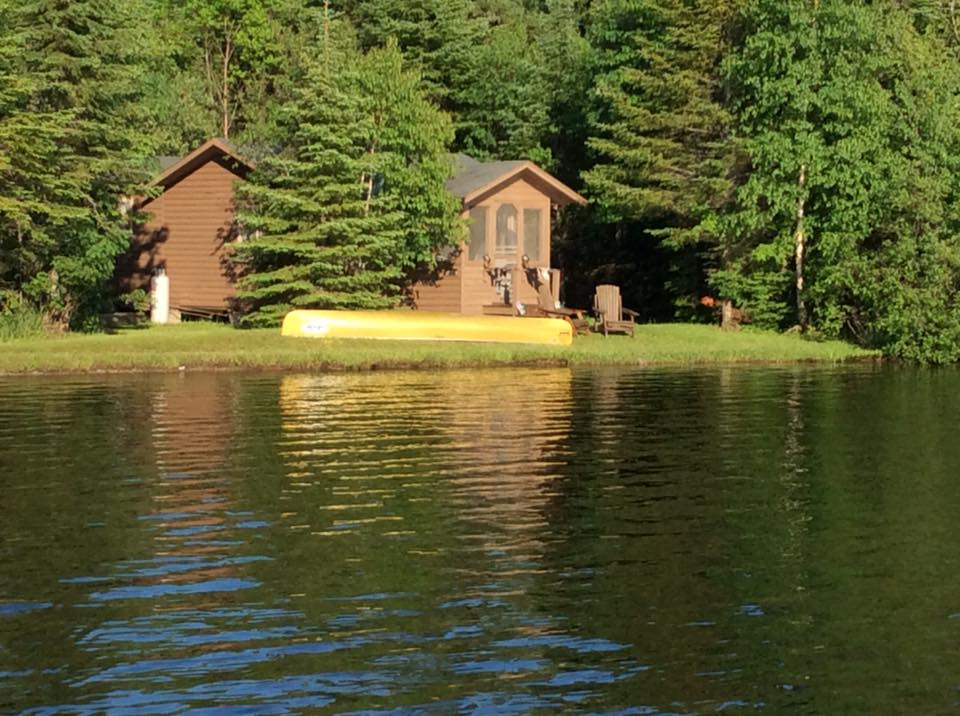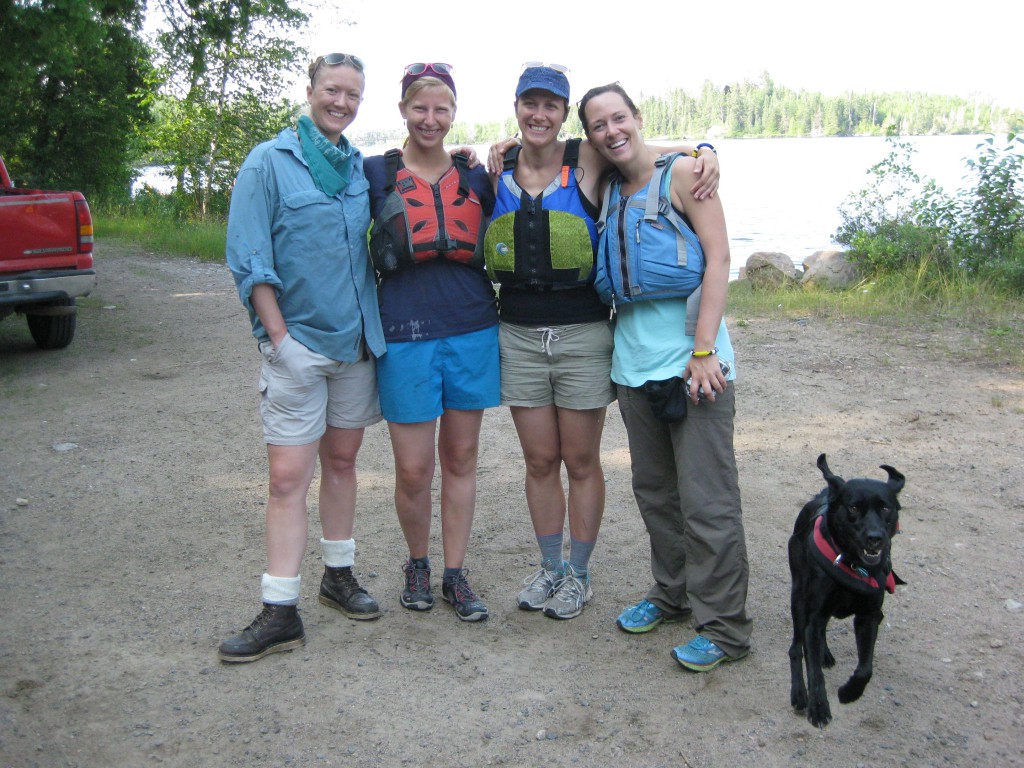Last June, I was able to sneak out for an afternoon day trip on the Snipe Lake Loop with my brother and sister-in-law when they were up. This short Boundary Waters Canoe Area Wilderness canoe route basically loops through Tuscarora’s backyard. We frequently send cabin guests and a handful of overnight campers on this route because it’s convenient, scenic, and provides an excellent introduction to the BWCA.
It was a glorious sunny day, so we grabbed a three-person Kevlar canoe and off we went . . . .
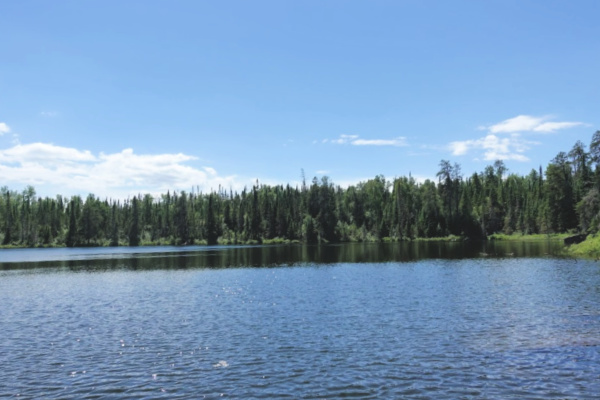
Missing Link Lake
As the name “loop” implies, this route can be done in two directions, either starting on our beach on Round Lake, or just down the Round Lake Road (County Road 47) at the public put-in for Cross Bay Lake. The three of us opted to start at Tuscarora for a couple reasons. Logistically, it was just easier to start at the beach since our canoes are right there and we didn’t have to monkey around with shuttling ourselves and canoe down the road . . . even if it is only 300 yards away from the outfitting building. I also liked the idea of getting the two longer portages done first thing (the portage from Round to Missing Link is 142 rods and the portage from Missing Link to Snipe is 180 rods), although by doing the route in the counterclockwise direction, we of course had more uphill portaging . . . . Clearly, a compelling argument can be made for doing the loop in either direction.
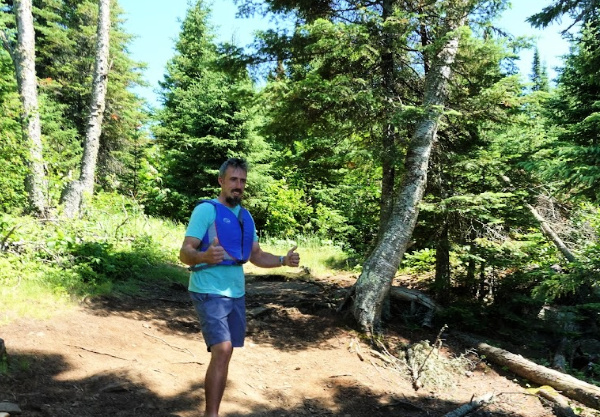
Brother at the Snipe Portage landing on Missing Link
It was a mid-week afternoon in late June and the woods were still pretty quiet. We ran into a group coming across the Missing Link portage, then passed a large group on the first campsite on Missing Link. From then on, we had the woods to ourselves.
One of the nice things about doing the Snipe Lake Loop with three people in a three-person canoe is that it’s easy to navigate the single biggest challenge on the entire six-mile route. About a quarter of a mile down the portage between Missing Link and Snipe Lake, you come to a large boulder that slopes down into a ravine. It’s only about a seven foot dip, but it can be a bit of a poser on how to tackle it when you come to this “valley” with a canoe on your shoulders. If you’re traveling by yourself or just one other person, the only real option is to set the canoe down, get yourself down the rock face, then collect the canoe and carry on.
My brother Peter was portaging the canoe when we reached this point, so his wife Ashley and I just grabbed the two ends of the canoe and held it up while Peter walk out from under the canoe and down the rock face. Once he was on level footing again, we just set it back down on his shoulders and continued on to beautiful Snipe Lake.
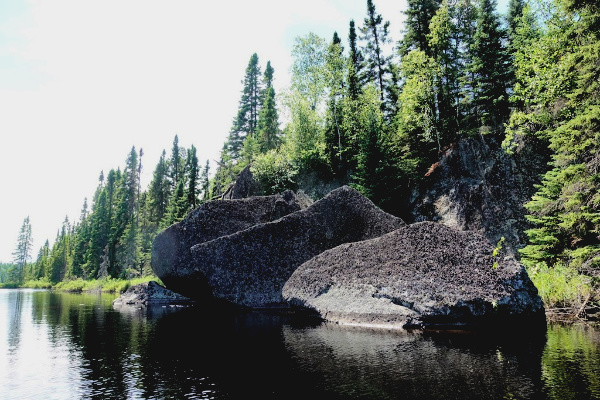
Snipe Lake
Snipe Lake really is a gem. Even though you’re only a couple miles into the BWCA, it feels like you’re deep in the wilderness. It has dramatic rock features, twisty canyons, and lush forest. It’s not a great lake for fishing (it just has small northerns) but with four campsites and not a lot of traffic, it’s a good option for people who want to feel like they’re in the remote wilderness without actually traveling very far.
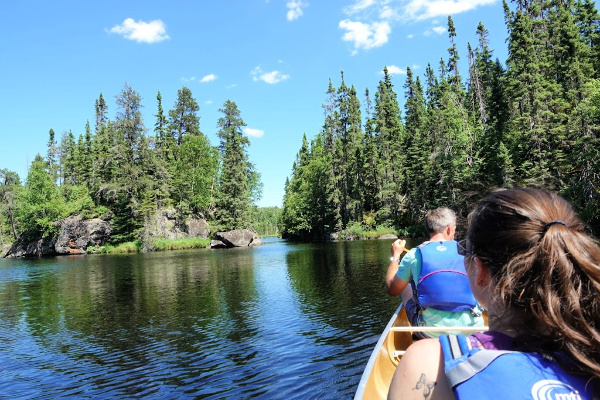
That said, there’s some debate about whether the Snipe Lake Loop is “easy.” Because of its convenient location, many Tuscarora guests get their first taste of the Boundary Waters on the Snipe Loop. It’s not the easiest Boundary Waters canoe route in the world, but it has several factors that push it into the “easier” category, namely that you only travel six miles to complete the whole loop meaning it can be done in about three and a half hours of continuous paddling and portaging. It’s also only on small bodies of water so you don’t have to worry too much about wind conditions. While two of the portages are longer, all of the portages are well traveled and well maintained.
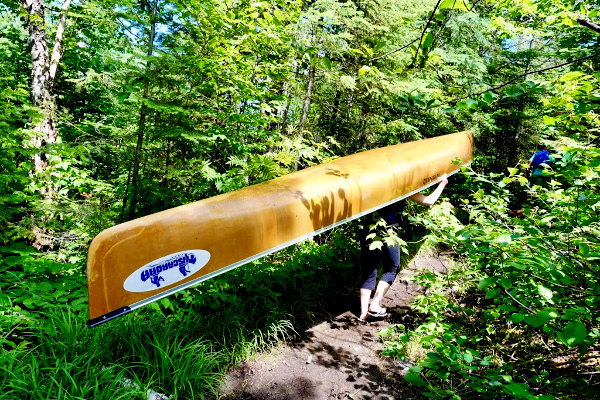
But every Boundary Waters trip inherently challenging on some level and even the easiest BWCA trip isn’t a walk in the park. (I actually wrote a whole blog post about the Boundary Waters not being a park a couple years ago.) As you can see in the photo above, the portages can be mucky. On Cross Bay Lake, the person in the bow needs to watch in front of them so the canoe doesn’t get hung up on the bottom or rocks as you paddle the shallow areas near the portages.
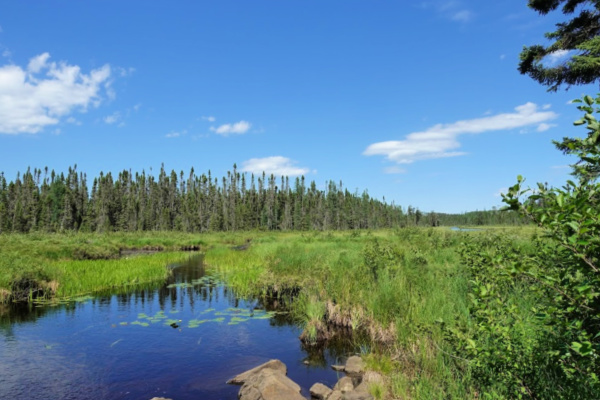
When you take off on Cross Bay Lake from the Snipe portage, you meander down a shallow, twisty waterway about creek-width. Be sure to watch for blooming pitcher plants if you’re paddling through in early summer. We literally saw hundreds of these carnivorous flowers in bloom as we paddled by – the most I’ve ever seen in one location. Although we didn’t see one on this trip, Cross Bay Lake is also know to be a bit of a moose viewing hot spot.
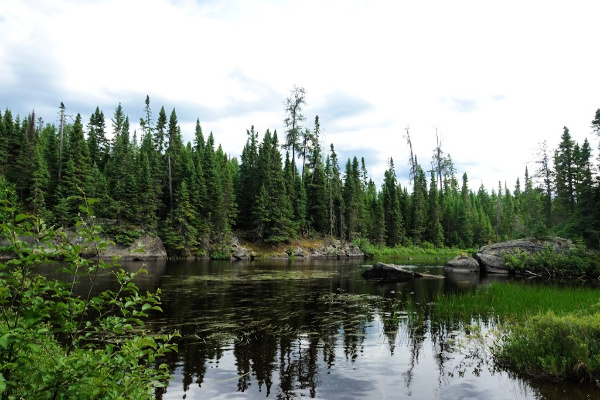
Cross Bay Lake
As you portage from Cross Bay Lake into Ham Lake, you’ll exit the Boundary Waters. You still have two portages to go to reach the public landing though. Ham Lake is completely outside of the Boundary Waters Canoe Area Wilderness, but still in the Superior National Forest. That means the four campsites on this lake are “dispersed sites” aka first come, first serve campsites that don’t require an overnight permit (or camping fee) to camp here. As a result, this lake can be pretty busy in the Boundary Waters high season (late July – mid August) when Boundary Waters permit quotas are filled, but people are still looking to get a BWCA camping experience. It’s also a lake that people frequently camp on for the last night of their overnight trip down to Long Island Lake or beyond, because Ham Lake has a good population of walleye and bass. Despite these facts, all four campsites were empty when we paddled past.
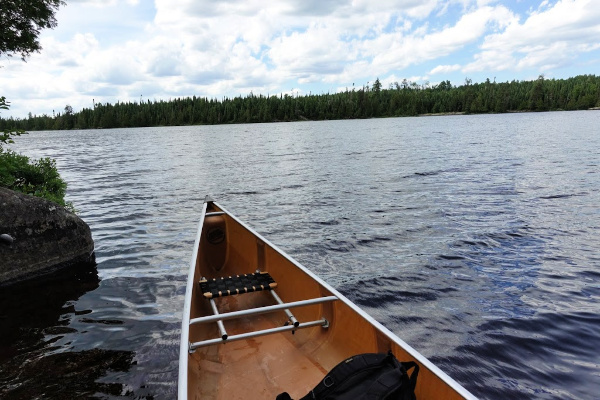
From Ham Lake, we continued on for the “portage/paddle/portage/paddle” around a couple sets of rapids on the Cross River back to the public landing. From there, we did a quick 1/3 mile walk up the road back to Tuscarora. Although we did the trip as a day trip, I could see why you’d choose this route for an overnight trip. For such a short BWCA route, it really has some great campsite options, especially if the purpose of your trip is to relax and recharge and fishing isn’t much of a priority.
Have you done the Snipe Lake Loop before?











